Cue up the Dick Dale for a trip down the beloved birding boulevard that is Pipeline Road. On my first day at the canopy tower, elite guide Jose Soto took us through the town of Gamboa to Pipeline. The names Gamboa and Pipeline possess almost talismanic properties in the provenance of Panamanian birding. The guides themselves visit again and again because on Pipeline, anything can happen.
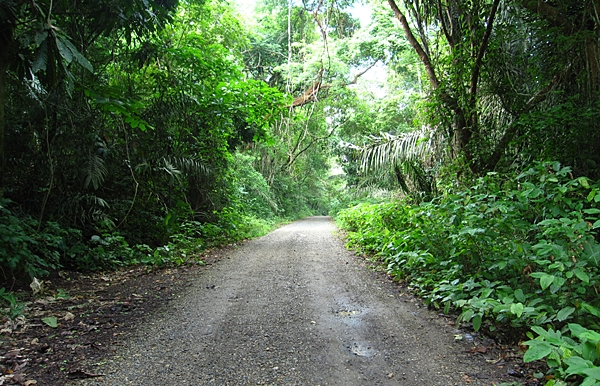
The route from the Canopy Tower to Pipeline passes through Gamboa, a town suffused with the birds of central American scrub and civilization. Our passage was attended by Tropical Kingbirds, Tropical Mockingbirds, Mangrove Swallows, Gray-breasted Martins, Smooth-billed Anis, Great-tailed Grackles, and Pale-vented Pigeons. We also, as one might expect, saw scads of seedeaters (Ruddy-breasted, Yellow-bellied, and Variable) and grassquits (Blue-black).
Pipeline road itself is a long dirt track used as a service road by the new Panama Rainforest Discovery Center. Ambitious birders hope to cover as much of the road’s 17 kilometers as possible but we just hoped to maximize its first few. We struck gold right away with what I thought was a Blue-crowned Motmot…
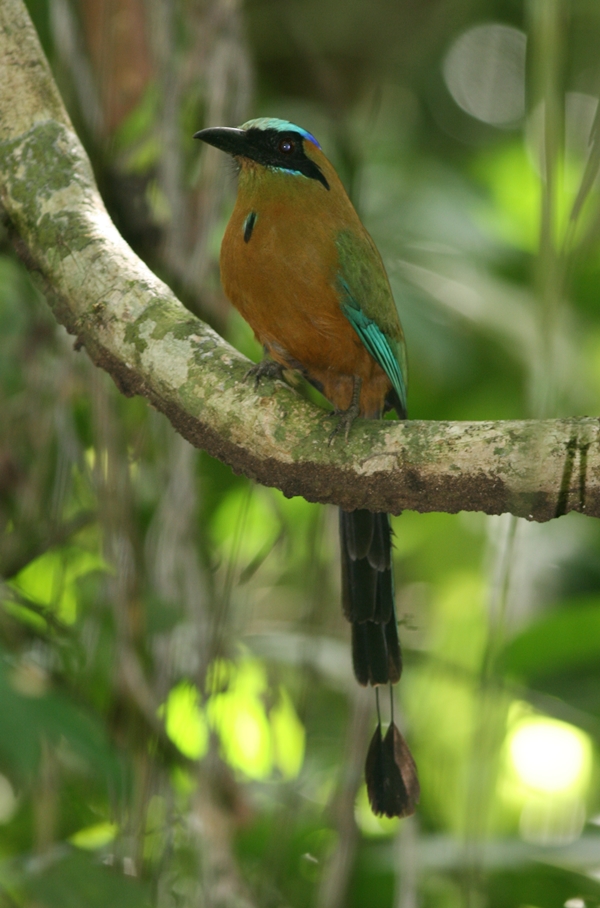
This stunner now answers to a new name. The South America Classification Committee (SACC) very recently split the Blue-crowned Motmot (Momotus momota) into 5 species (as the IOC will in its next update), tendering the territory of central Panama to the Whooping Motmot (Momotus subrufescens). This motmot can be distinguished from the other blue crowns by its azure tonsure and black cap.
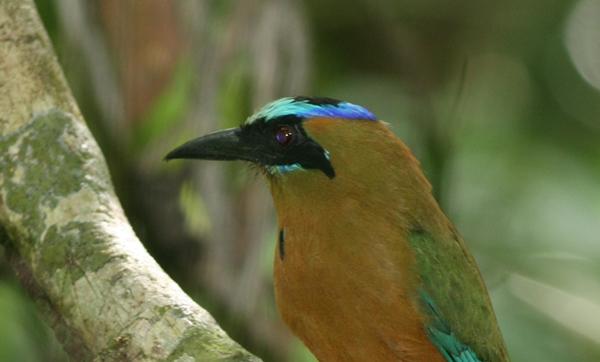
Whoop it up!
The day’s heat set in early, inducing torpor in the forest’s avifauna. Still, species after species crossed our path including Paltry Tyrannulet, Red-legged Honeycreeper, and both Blue-crowned and Red-capped Manakins (alas, both females!) While we didn’t hit any army ant swarms, we did pick up a couple of antbirds. Jose expertly whistled in a stunning Chestnut-backed Antbird while a confiding Western Slaty Antshrike needed no such serenade to come closer.
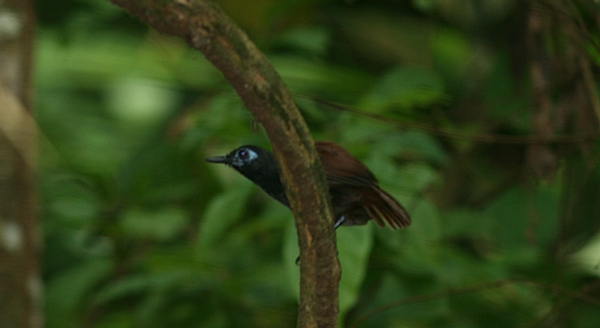
Chestnut-backed Antbird
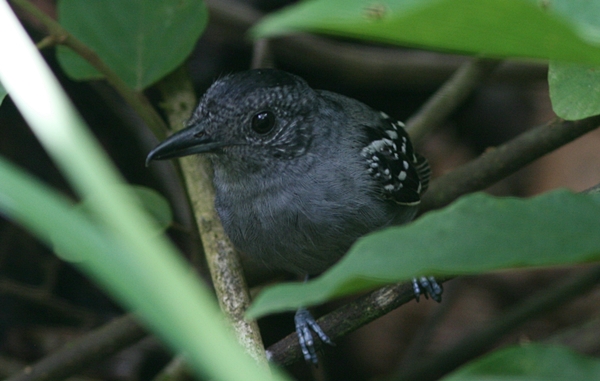
Western Slaty Antshrike
A clear hot day may suppress birds of tree and thicket but it’s a tonic for the ones that love to soar. We thrilled to Zone-tailed Hawk and Double-toothed Kites. Even better were the three species of vulture, the expected Black and Turkey joined by one high-altitude King. Hail to the king! I was amazed to see Magificent Frigatebirds streaming through the flocks of Black Vultures, a common phenomenon in the canal zone.
Where the road forks left towards the institute, we bore right to a spot by a small bridge. Jose identified this area as a favorite for Purple-throated Fruitcrows. No sooner were the words out of his mouth when one and then another flew into view. While they proceeded to raise a ruckus, I noticed a long-tailed bird poking its head into a termite nest atop a tall palm. Wow, a Violaceous Trogon nest with both parents in attendance!
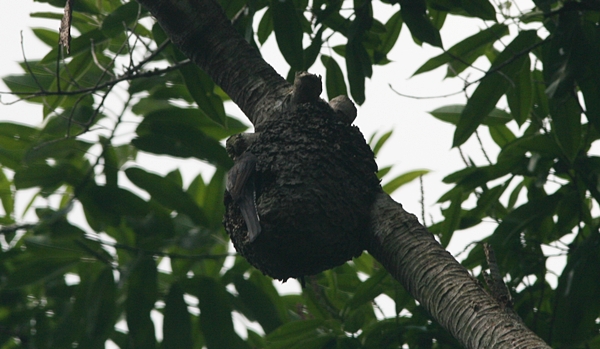
Violaceous Trogon on nest
We scooped up a few more species like Black-cheeked Woodpecker, Red-rumped Cacique, and Crimson-backed Tanager along with Mantled Howler Monkeys, Whip-tailed Lizards, Leaf Cutter Ants, and loads of amazing butterflies. I’ve never seen so many Blue Morphos in my life. The highlight, however, was a tiny little smudge of a bird, the Black-capped Pygmy Tyrant. I’d share a photo but I couldn’t switch to my macro setting fast enough! I kid but then again we are talking about the world’s smallest passerine.
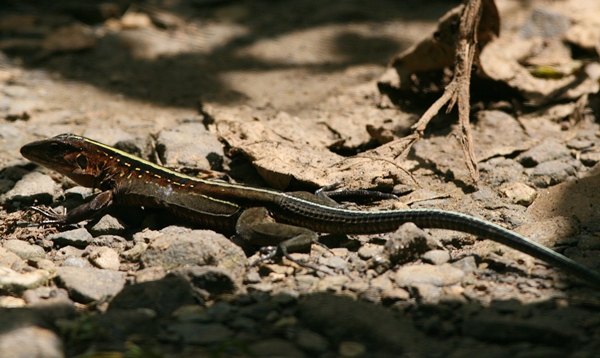
Whip-tailed Lizard
All in all, Pipeline Road delivered on its promise. Read a hundred trip reports for this easy, breezy trail and you’ll see a different list every time. The one constant seems to be that there will always be birds you want to see!











Such a legendary birding area. Thanks for sharing some of your highlights.
Beautiful stuff!
Beautiful pics, have you upgraded your old camera! Nice writing skills, you could have been an english literature teacher.. He He..
Thanks, guys. Pipeline is amazing. I just got back from a second trip and saw so many other species.
Renato, you are too kind… I think. I didn’t truly learn how to photograph birds until I visited you in Ecuador!
Nooo Mike, you are the kind man! So did you get a new camera? Really those pictures look great, and you are still using that Rebel XTi with the manual focus 300 mm lens. Those birds must have come very near! Are the Panamanians feeding them worms too like Angel Paz.
No worm-feeding, they are curious (and you had an excellent guide!)
Nooo, I think Mike bought a new camera, and the good pictures don´t have anything to do with a good guide… unless the guide took the pictures.. He he
JAJAJAJJAJAJAJJAJAJA